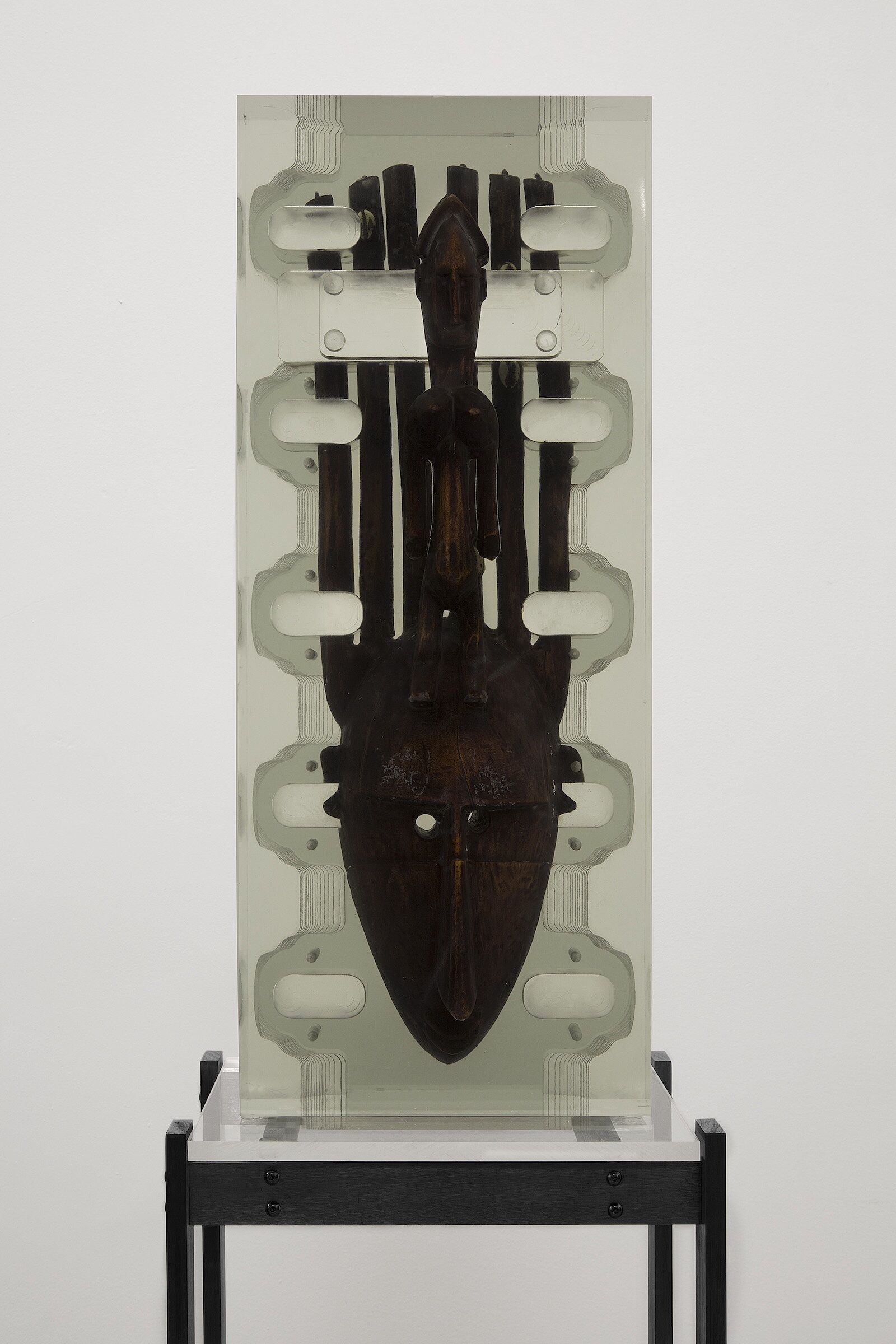Whitney Biennial 2019 | Art & Artists
May 17–Oct 27, 2019
Whitney Biennial 2019 | Art & Artists
Matthew Angelo Harrison
31
Floor 5
Born 1989 in Detroit, MI
Lives in Detroit, MI
Matthew Angelo Harrison combines various materials, technologies and found objects to create hybrid forms that address our increasingly globalized, technology-mediated selves, with reference to the relations between African and African American culture and identity, a concept he calls “abstracted ancestry.” While some of the artifacts he uses are authentic antiquities from specific tribes, others were mass produced for sale abroad, and still others are of unknown origin—a reality that acknowledges both the enduring market for such objects and the ways colonial collecting practices erase particular identities. Complicating perceptions, at first glance, his sculptures may resemble sleek, luxurious, midcentury forms, but they often turn out to be something else entirely. The worked surfaces containing suspended objects simultaneously deny access and give visual form to the refracted histories of the objects themselves.
Dark Silhouette: Composition of Borrowed Inlets #2, 2018
-
0:00
Matthew Angelo Harrison
0:00
Rujeko Hockley: Matthew Angelo Harrison is an artist interested in the intersection of cultural objects, specifically in his case African sculpture as well as personal artifacts from his family, especially his mother, and their intersection with technology and modes of production.
Narrator: Biennial co-curator Rujeko Hockley.
Rujeko Hockley: In the work that you’re seeing he’s taken sculptures from various African countries that he has purchased and embedded them within resin and other industrial materials. He makes machines including CNC routers and 3D printers with which to do the work. He worked at Ford Motor Company, so this is drawing on his own technological know-how.
He’s also very interested in the kind of slippage between African American culture and artifacts and interest in Africa, we think of this kind of mass that is Africa when of course it’s over fifty countries, hundreds of language, hundreds of ethnic groups, great diversity of all kinds. He’s also interested in rebuffing and interrogating colonialist collecting strategies, which are part of the reason why we even have objects like this in Western museums. But also are part of the reason we kind of see them as a generic mass, because they were collected often without attention to the maker, the name of the maker, the place of origin, any meaning that they may have had in their culture of origin. So this is embedded in the work.

